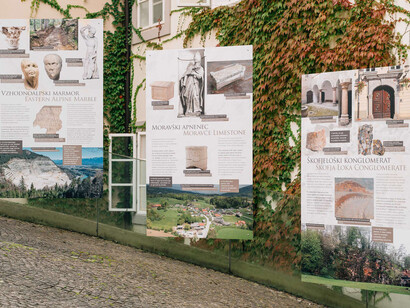The exhibition explores the fascinating study of stones used in ancient art, architecture, and the Baroque period, shedding light on the material foundations of some of humanity’s most remarkable cultural achievements. While artworks and monuments are often admired for their aesthetic and symbolic qualities, the choice of stone — its origin, texture, and color — played a crucial role in shaping their visual and structural identity. By examining these materials, the exhibition offers a deeper understanding of the artistic and technical decisions that shaped both ancient craftsmanship and later Baroque creativity, emphasizing the enduring relationship between natural resources and human expression.
Through a selection of significant artworks and architectural examples, the exhibition delves into the rarely discussed question of which types of stone were chosen by artists, sculptors, and builders for specific projects. Visitors will gain insight into how the physical properties of marble, limestone, and other stones influenced artistic techniques and aesthetic outcomes. The focus on Roman Emona — the ancient predecessor of modern Ljubljana — provides a compelling local context, connecting Slovenia’s cultural heritage with broader Mediterranean traditions. By doing so, the exhibition highlights the continuity between ancient and Baroque approaches to material use, revealing how artistic innovation has long been grounded in a deep understanding of nature’s resources.
Aligning with the prestigious international congress of the Association for the Study of Marble and Other Stones in Antiquity (ASMOSIA), to be held in Ljubljana in September 2025, the exhibition contributes to a global dialogue on historical materials and craftsmanship. At the same time, it forms part of a wider series of exhibitions and events throughout 2025 dedicated to celebrating Slovenian Baroque art and architecture. Together, these initiatives aim to illuminate the complex interplay between science, art, and history, while reaffirming the significance of stone as both a creative medium and a witness to centuries of cultural evolution.
















